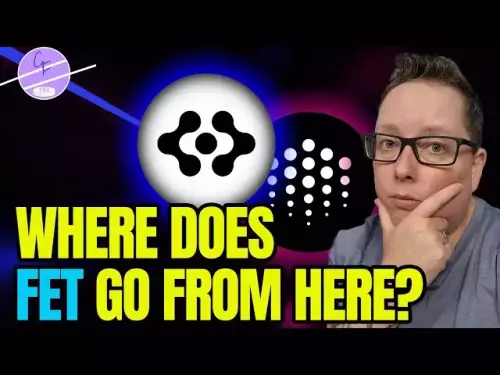-
 bitcoin
bitcoin $114684.631706 USD
-0.87% -
 ethereum
ethereum $4228.677447 USD
1.58% -
 bnb
bnb $1294.880693 USD
-1.16% -
 tether
tether $1.000819 USD
-0.02% -
 xrp
xrp $2.605138 USD
2.79% -
 solana
solana $209.908690 USD
5.89% -
 usd-coin
usd-coin $0.999903 USD
-0.03% -
 dogecoin
dogecoin $0.213423 USD
2.93% -
 tron
tron $0.322721 USD
-0.10% -
 cardano
cardano $0.727247 USD
3.66% -
 hyperliquid
hyperliquid $42.339456 USD
6.05% -
 chainlink
chainlink $19.910811 USD
5.16% -
 ethena-usde
ethena-usde $1.000557 USD
0.00% -
 stellar
stellar $0.349734 USD
2.69% -
 bitcoin-cash
bitcoin-cash $543.848687 USD
-0.21%
What does the sudden increase in SEI trading volume mean? How to deal with it?
A sudden spike in SEI trading volume may signal new developments or market manipulation; traders should monitor price charts and use stop-loss orders to manage risks effectively.
Apr 30, 2025 at 03:21 pm

The sudden increase in SEI trading volume can have several implications within the cryptocurrency market. SEI, or Sei Network, is a Layer 1 blockchain designed for trading applications, and a surge in its trading volume can indicate various market dynamics. This article will explore what such an increase might signify and provide actionable steps on how to navigate these changes effectively.
Understanding the Increase in SEI Trading Volume
When there is a sudden increase in SEI trading volume, it typically means that there is heightened interest in the asset. This could be due to several factors, including:
- New Developments or Partnerships: Announcements of significant developments or partnerships can drive interest and trading activity.
- Market Sentiment: Positive news or favorable market sentiment towards SEI can lead to increased buying and selling.
- Speculative Trading: Traders may be speculating on future price movements, leading to higher volumes.
- Market Manipulation: Sometimes, high volumes can be a result of coordinated efforts to manipulate the market.
Understanding the root cause of the volume increase is crucial for making informed decisions.
Analyzing the Impact on SEI's Price
A sudden increase in trading volume often correlates with price volatility. If the volume increase is accompanied by a price surge, it could indicate strong buying pressure, suggesting bullish sentiment. Conversely, if the volume increase coincides with a price drop, it might signal bearish sentiment or a potential sell-off.
To analyze this impact, traders should:
- Monitor price charts: Use technical analysis tools to identify trends and patterns.
- Review order books: Look at the depth of the market to understand the balance between buy and sell orders.
- Track market sentiment: Follow social media and forums to gauge the community's sentiment towards SEI.
How to Deal with Increased SEI Trading Volume
Dealing with increased trading volume requires a strategic approach. Here are steps to effectively manage the situation:
- Stay Informed: Keep up-to-date with the latest news and developments related to SEI. Websites like CoinMarketCap and CoinGecko can provide real-time data and news.
- Use Trading Tools: Utilize trading platforms that offer advanced tools for managing high-volume trading. Platforms like Binance and Kraken provide features such as stop-loss orders and margin trading.
- Diversify Your Portfolio: To mitigate risk, consider diversifying your investments across different cryptocurrencies. This can help balance potential losses if SEI's price experiences significant volatility.
- Set Clear Trading Goals: Establish clear entry and exit points for your trades. This helps in making disciplined trading decisions amidst high volume and volatility.
Implementing Risk Management Strategies
High trading volumes can lead to increased risk. Implementing effective risk management strategies is essential:
- Set Stop-Loss Orders: Use stop-loss orders to automatically sell SEI if its price falls to a certain level, limiting potential losses.
- Utilize Take-Profit Orders: Set take-profit orders to lock in gains when SEI reaches a predetermined price level.
- Manage Position Sizes: Avoid over-leveraging by keeping position sizes manageable. This reduces the impact of adverse price movements.
- Monitor Market Liquidity: High volumes can sometimes lead to liquidity issues. Ensure that the trading platform you use has sufficient liquidity to handle your trades.
Practical Steps to Trade SEI During High Volume
When trading SEI during periods of high volume, follow these practical steps:
- Choose a Reliable Exchange: Select a reputable cryptocurrency exchange that supports SEI trading. Ensure the platform is secure and offers the necessary trading features.
- Fund Your Account: Deposit funds into your trading account. Ensure you have enough to cover your intended trades and potential fees.
- Place Your Order: Decide whether to place a market order for immediate execution or a limit order to buy or sell at a specific price.
- For a market order, simply select 'Buy' or 'Sell' and enter the amount of SEI you wish to trade.
- For a limit order, specify the price at which you want to buy or sell SEI, and the order will be executed when the market reaches that price.
- Monitor Your Trades: Keep an eye on your open positions and be ready to adjust your strategy based on market movements.
- Withdraw Profits: Once you've achieved your trading goals, withdraw your profits to a secure wallet to protect your gains.
Frequently Asked Questions
Q: Can high trading volume alone predict SEI's price movement?A: While high trading volume can indicate increased interest and potential price volatility, it is not a definitive predictor of price movement. Other factors such as market sentiment, news, and technical indicators should also be considered.
Q: How can I differentiate between genuine volume spikes and market manipulation?A: Differentiating between genuine volume spikes and market manipulation can be challenging. Look for signs such as unnatural price movements, high volumes at unusual times, and coordinated social media activity. Using tools like blockchain explorers and trading analytics platforms can help identify potential manipulation.
Q: What should I do if SEI's trading volume suddenly drops after a spike?A: A sudden drop in trading volume after a spike can indicate a shift in market interest or the end of a speculative phase. Monitor the price action and market sentiment. If the price stabilizes or continues to rise, it might be a good opportunity to take profits. If the price drops significantly, consider adjusting your stop-loss orders to protect your investment.
Q: Are there specific indicators I should use to analyze SEI's trading volume?A: Yes, several indicators can help analyze SEI's trading volume. The Volume Weighted Average Price (VWAP) can provide insights into the average price at which SEI has traded throughout the day. The On-Balance Volume (OBV) indicator can help confirm price trends based on volume changes. Additionally, the Relative Strength Index (RSI) can be used to assess whether SEI is overbought or oversold, which can be correlated with volume data.
Disclaimer:info@kdj.com
The information provided is not trading advice. kdj.com does not assume any responsibility for any investments made based on the information provided in this article. Cryptocurrencies are highly volatile and it is highly recommended that you invest with caution after thorough research!
If you believe that the content used on this website infringes your copyright, please contact us immediately (info@kdj.com) and we will delete it promptly.
- XRP Price Prediction: Weekend Rollercoaster or Rally?
- 2025-10-12 08:45:16
- Bittensor (TAO): Super Bullish Signals Point to Potential 2x Rally
- 2025-10-11 10:25:12
- Silver Price Correction: Navigating the Dip & Identifying Key SEO Keywords
- 2025-10-11 10:25:12
- Decoding Crypto Trends: Bittensor's Bull Run, Cardano's Dip, and LivLive's Presale Buzz in 'Uptober 2025'
- 2025-10-12 08:45:16
- MoonBull: The Crypto Meme Coin Promising 1000x Gains?
- 2025-10-11 10:30:01
- Crypto Payroll Revolution: Stablecoins, Altcoins, and the Future of Salary Payments
- 2025-10-11 10:30:01
Related knowledge

Practical parameter settings for a Bitcoin multi-timeframe moving average system
Sep 18,2025 at 10:54pm
Optimizing Timeframe Combinations for Bitcoin Trading1. Selecting appropriate timeframes is crucial when building a multi-timeframe moving average sys...

How can I filter out false breakouts in Dogecoin high-frequency trading?
Sep 22,2025 at 01:00am
Understanding False Breakouts in Dogecoin Trading1. A false breakout occurs when Dogecoin's price appears to move beyond a defined support or resistan...

Techniques for identifying tops and bottoms in the Bitcoin on-chain NVT model
Sep 20,2025 at 07:54pm
Understanding the NVT Model in Bitcoin Analysis1. The Network Value to Transactions (NVT) ratio is often described as the 'P/E ratio' of the cryptocur...

What does the surge in open interest in Bitcoincoin futures mean?
Sep 20,2025 at 11:18pm
Understanding the Surge in Dogecoin Futures Open Interest1. A surge in open interest within Dogecoin futures indicates a growing number of active cont...

How can I use the Ethereum USDT premium to gauge market sentiment?
Sep 18,2025 at 11:55pm
Understanding the Ethereum USDT Premium1. The Ethereum USDT premium refers to the price difference between USDT (Tether) traded on Ethereum-based plat...

What should I do if Ethereum staking yields decline?
Sep 20,2025 at 06:18am
Understanding the Causes Behind Declining Ethereum Staking Yields1. The Ethereum network transitioned to a proof-of-stake consensus mechanism with the...

Practical parameter settings for a Bitcoin multi-timeframe moving average system
Sep 18,2025 at 10:54pm
Optimizing Timeframe Combinations for Bitcoin Trading1. Selecting appropriate timeframes is crucial when building a multi-timeframe moving average sys...

How can I filter out false breakouts in Dogecoin high-frequency trading?
Sep 22,2025 at 01:00am
Understanding False Breakouts in Dogecoin Trading1. A false breakout occurs when Dogecoin's price appears to move beyond a defined support or resistan...

Techniques for identifying tops and bottoms in the Bitcoin on-chain NVT model
Sep 20,2025 at 07:54pm
Understanding the NVT Model in Bitcoin Analysis1. The Network Value to Transactions (NVT) ratio is often described as the 'P/E ratio' of the cryptocur...

What does the surge in open interest in Bitcoincoin futures mean?
Sep 20,2025 at 11:18pm
Understanding the Surge in Dogecoin Futures Open Interest1. A surge in open interest within Dogecoin futures indicates a growing number of active cont...

How can I use the Ethereum USDT premium to gauge market sentiment?
Sep 18,2025 at 11:55pm
Understanding the Ethereum USDT Premium1. The Ethereum USDT premium refers to the price difference between USDT (Tether) traded on Ethereum-based plat...

What should I do if Ethereum staking yields decline?
Sep 20,2025 at 06:18am
Understanding the Causes Behind Declining Ethereum Staking Yields1. The Ethereum network transitioned to a proof-of-stake consensus mechanism with the...
See all articles










































































